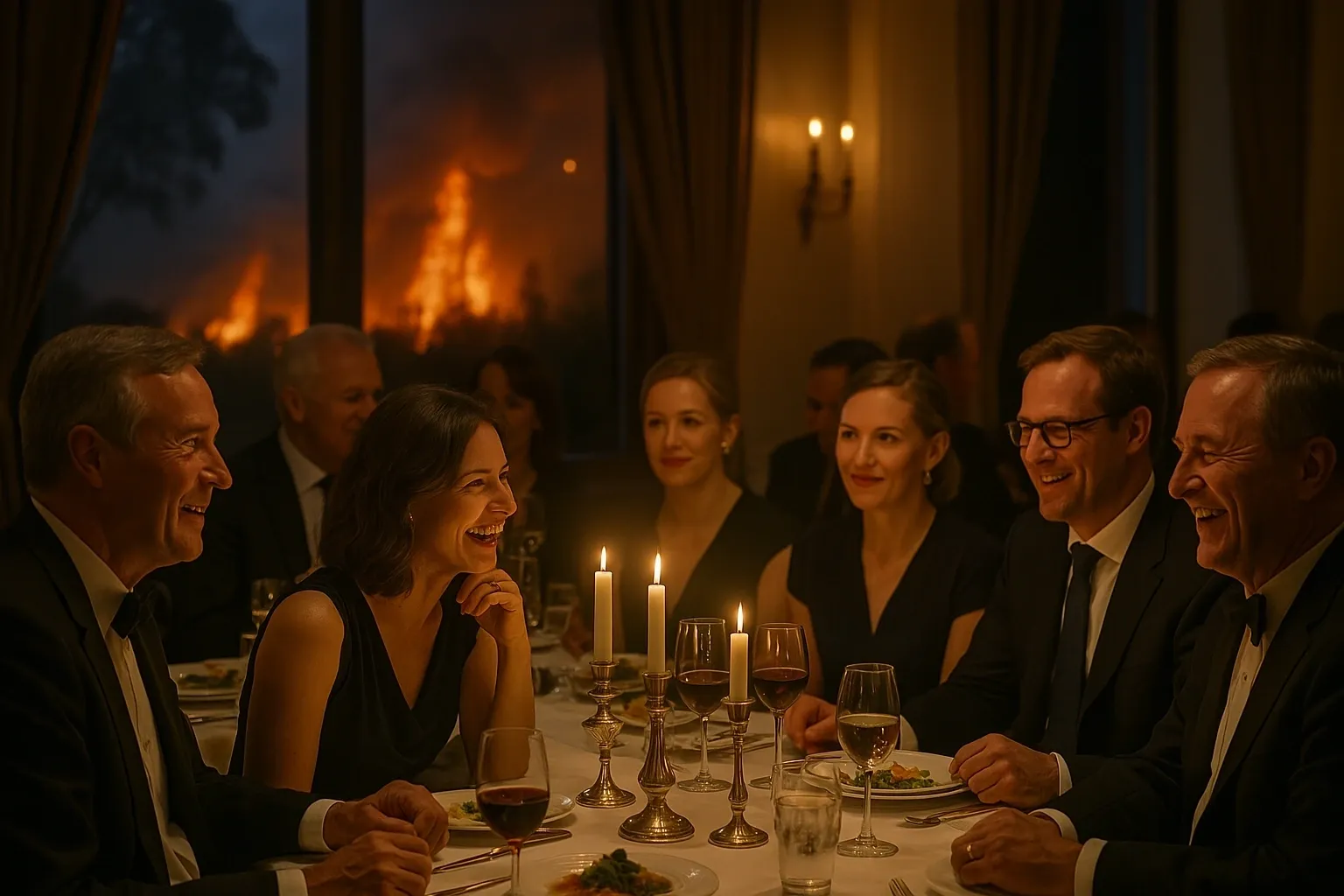The Day I Fell in Love With AI

I never thought I’d say this, but the moment AI handed me the perfect image for my short story Fiddling While Rome Burns, I was gone – smitten. This wasn’t a slow burn. One minute I was politely agreeing to “see what it could do,” and the next I was staring at an image that felt like it had leapt straight from my imagination.
I confess, this wasn’t my first brush with the dark art of AI. The world around me had already been turned upside down. My friend Julie – once a motor mechanic apprentice and double-decker bus driver – turned up at my door with a cake baked in her air fryer. Michele – who’s always loathed physical exercise – was training to walk the Camino. Apolitical friends had campaigned for independents at the last election, while our “Environment” Minister seemed intent on trashing the planet. In such a topsy-turvy world, it felt only right that I too should step out of my comfort zone.
And mine has been a very comfortable zone. I’m not tech-savvy – never have been. I wrote my first book by hand. My trusted writing guides were _The Elements of Style _by Strunk and White and Webster’s Synonyms and Antonyms. I grew up without a computer, a mobile phone, or even a credit card. My car is twenty years old (petrol, of course) and I still park front-first (no reversing cameras). Like many in my generation, I carry a healthy scepticism towards new technology and a stubborn fondness for doing things the way I’ve always done them.
But once I started asking ChatGPT questions, I began to see its potential – for me. As a creative writer, I’ve never been great at summarising my work. Ask me, “What’s your book about?” and I’ve always floundered. Trying to explain _Off Track _to a faceless AI forced me to slow down, strip away the emotional investment I have, and think clearly about what I’d actually written. Most of ChatGPT’s attempts weren’t quite right – but that only made me dig deeper, figure out why, and refine my own thinking.
Besides, who else would spend six hours with me in intense discussion to nail down a single perfect sentence… and then willingly do it all again the next day because I’d changed my mind? It became an ongoing brainstorming session – no judgement, no eye-rolling – and I realised that AI was a wonderful tool that could help me craft summaries with clarity.
And then came _the _image. After days of back-and-forth about my short story’s summary, ChatGPT produced something that made me gasp. It was exactly right. I was in love.
But like many romances, this one had its flaws. I soon discovered ChatGPT couldn’t count – a problem when you’re wrangling meta descriptions. It sometimes defaulted to formulaic phrasing, no matter how much I pushed. And it had an infuriating habit of using unspaced EM dashes… until I trained it to prefer spaced EN dashes. Out of curiosity, I even asked it to shorten one of my stories. The result? Let’s just say we won’t be collaborating on creative fiction anytime soon.
So no – I won’t be letting AI write my stories. But for helping me write a clean, explanatory summary for each? It’s brilliant.
If you’re curious, you can read my short story Fiddling While Rome Burns – about political inaction and the climate emergency – [here](https://bushtelegraphxpress.com/fiddling-while-rome-burns/) on this website. The image might be AI-generated, but the story is 100% mine.
